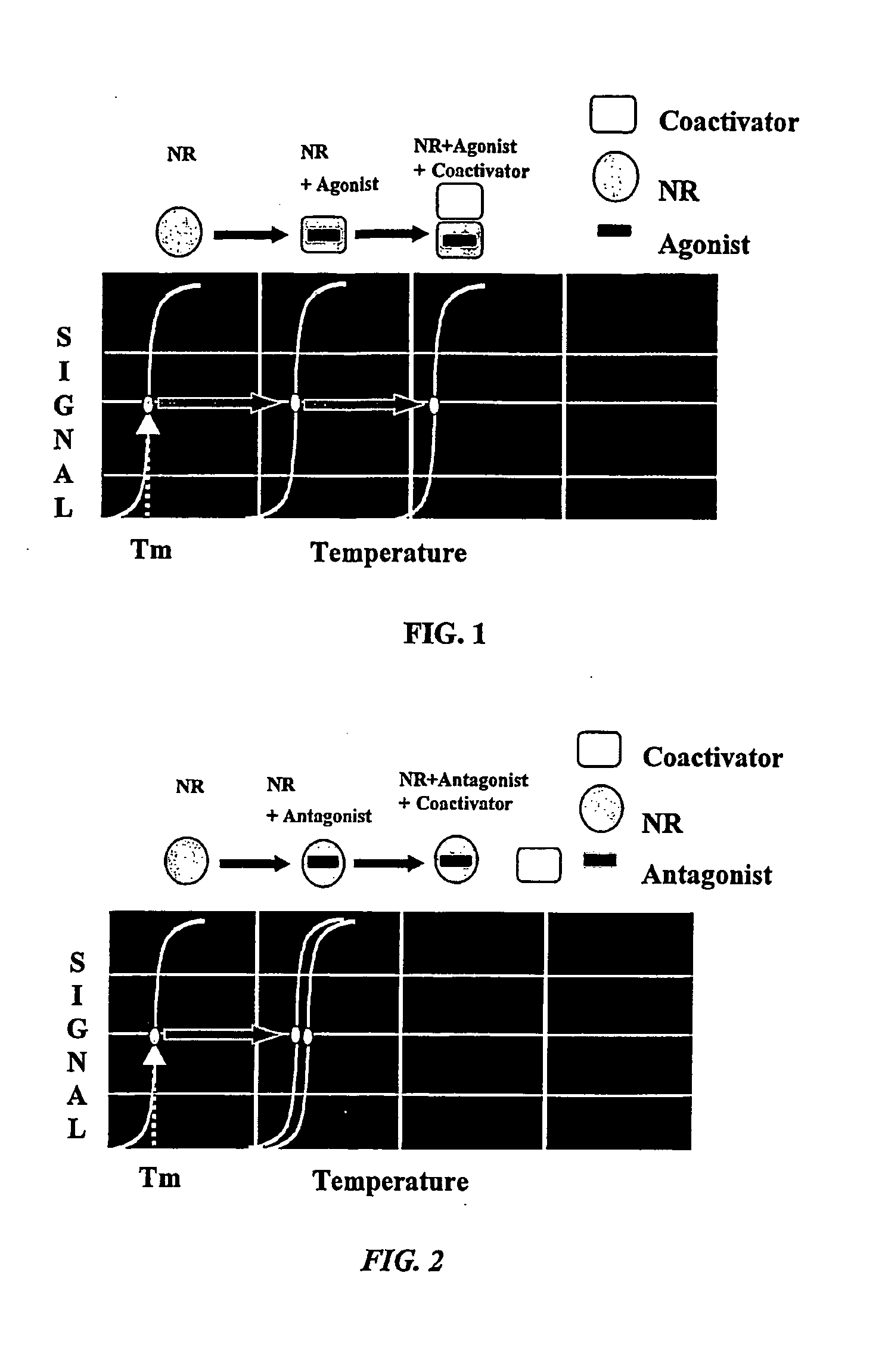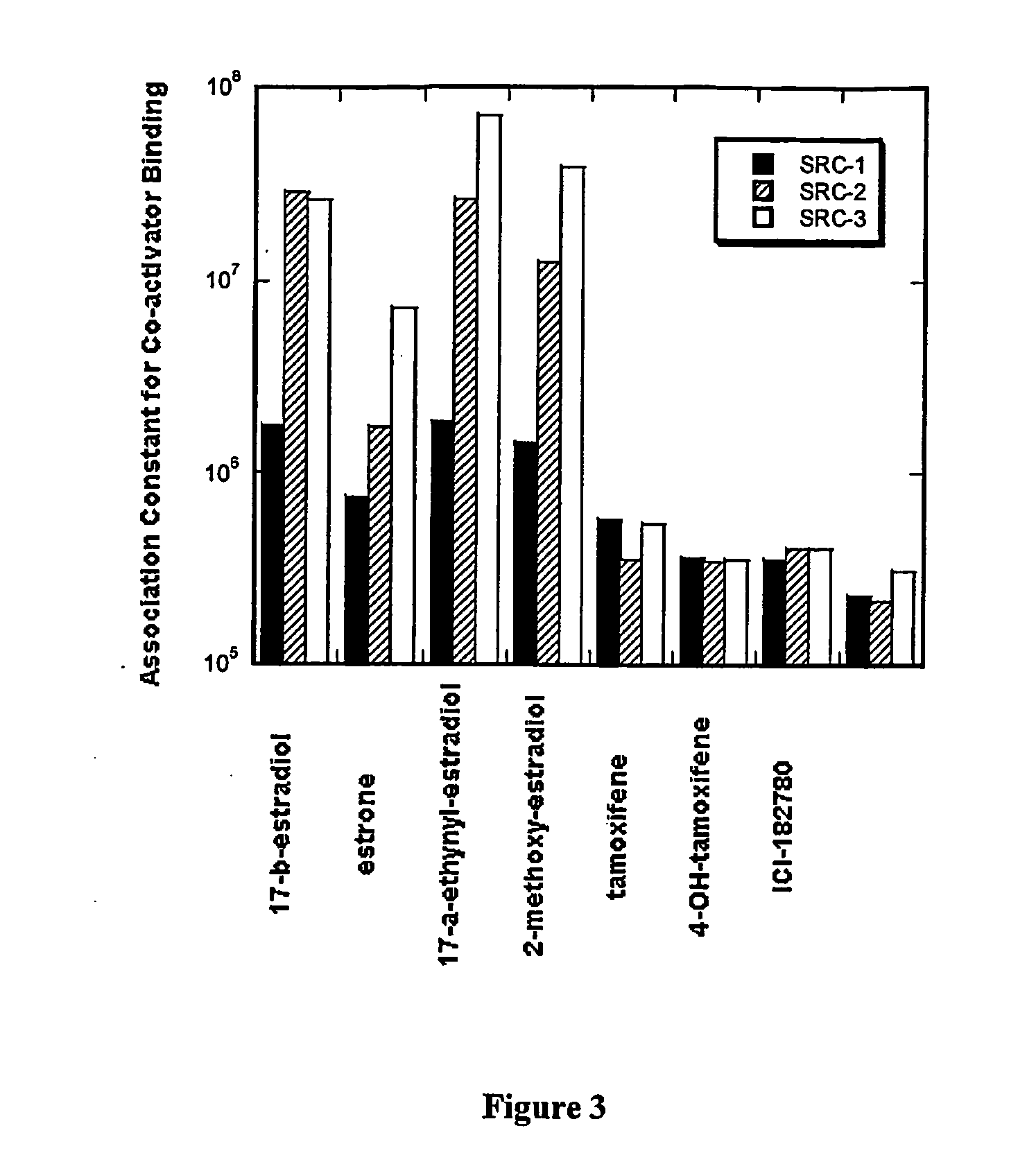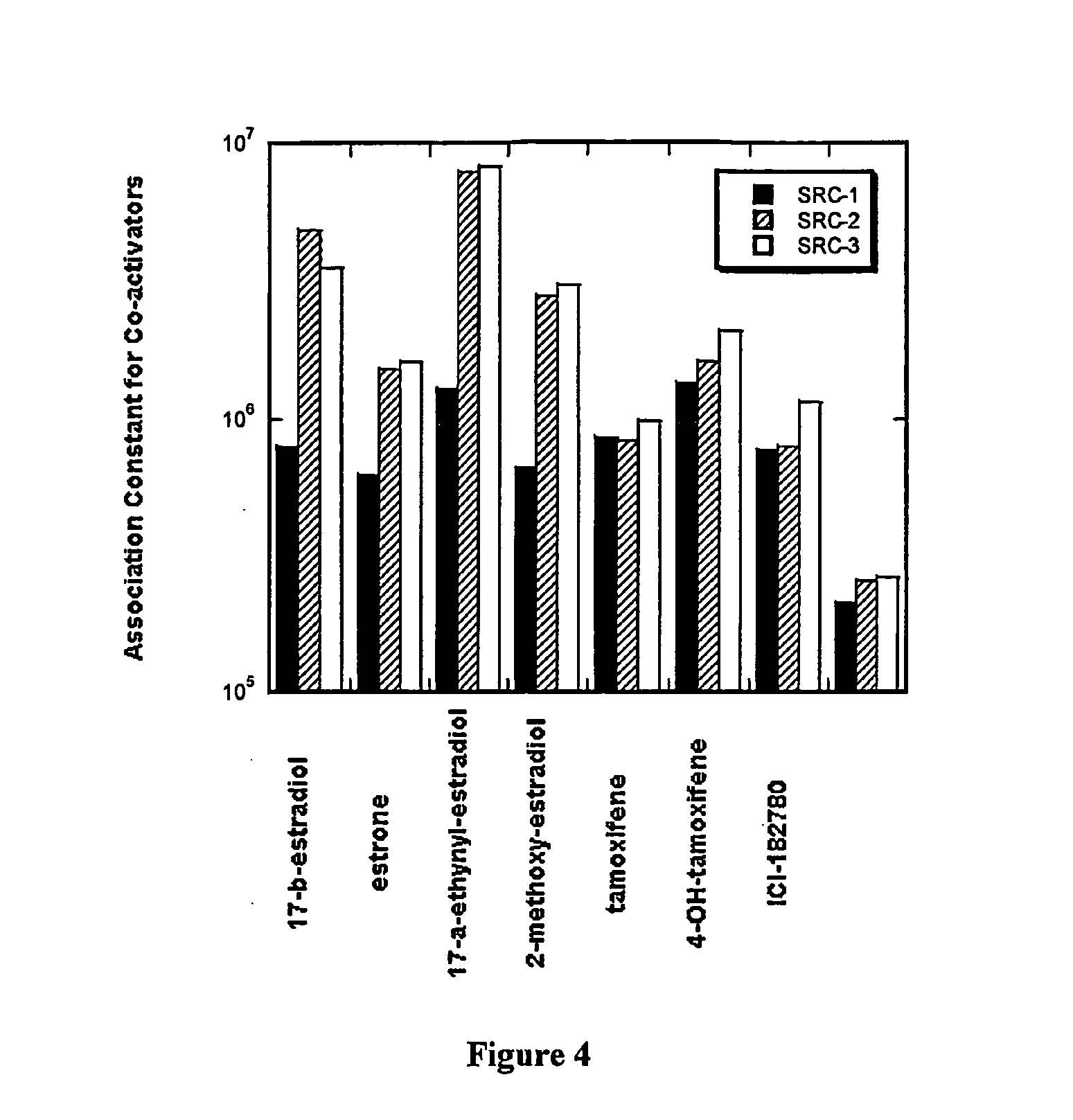Method for the identification of ligands
a technology of ligands and methods, applied in the field of can solve the problems of cumbersome and limited methods for identifying ligands, and inability to teach the identification of a molecule,
- Summary
- Abstract
- Description
- Claims
- Application Information
AI Technical Summary
Benefits of technology
Problems solved by technology
Method used
Image
Examples
example 1
[0139] Table 1, shown below, is a summary of the data obtained for ER-α and ER-β for the study of a panel of four known agonist and three known antagonists in the presence of a co-activator protein SRC-3; in the presence of two co-activator peptides SRC1-NR2 and SRC3-NR2 derived from the sequence of the co-activators SRC-1 and SRC-3; and in the presence of the co-repressor peptide NCoR-1 derived from the co-repressor NCoR-1.
[0140] The concentration of ER-α and ER-β in all of the experiments was 8 μM, the ligand concentration was 20 μM, SRC-3 was 11 μM, and the co-regulator peptides SRC1-NR2, SRC3-NR2, and NCoR-1 was at 100 μM. The experiments were performed in 25 mM HEPES buffer pH 7.9, 200 mM NaCl, 5 mM DTT and in the presence of 25 μM dapoxyl sulfonamide or ANS dye (available from Molecular Probes, Inc., Eugene, Oreg.).
[0141] A 2 μL ligand solution at 2 times the final concentration was dispensed with a micropipette into a 384 well black wall Greiner plate. Then, 2 μL of the pro...
example 2
[0145] ER-α was screened against a panel of steroid-like ligands to verify the ability of the methods of the present invention to determine ligands, and the function (see, e.g., U.S. Patent Publication No. US 2001 / 0003648 A1), of ER-α if this receptor was classified as an orphan. Ligands that are known to interact with ER-α are identified as producing an increase in the stability of the receptor (compounds that are underlined versus those which are not underlined).
[0146] The concentration of ER-α in all of the experiments was 8 μM and the ligand concentration was 20 μM. The experiments were performed in 25 mM phosphate pH 8.0, 200 nM NaCl, 10% glycerol and in the presence of 25 μM dapoxyl sulfonamide dye (available from Molecular Probes, Inc., Eugene, Oreg.).
[0147] A 2 μL ligand solution at 2 times the final concentration was dispensed with a micropipette into a 384 well black wall Greiner plate. Then, 2 μL of the protein dye solution was dispensed on top of the ligand solution in...
example 3
[0149] Examples of other protein-protein interactions that may be analyzed using the present invention are illustrated in Table 3, shown below.
TABLE 3Protein PartnerLigandRelated BiologicalProtein of Interest(co-regulator)PhenotypeActivityGPCRGsαAgonistIncrease cAMP orstimulate regulation ofCa2+ channelsGPCRGiαAgonistDecrease cAMPGPCRGoαAgonistStimulate regulation ofCa2+ channelsGPCRGtaAgonistIncrease cGMP andphosphodiesteraseactivityGPCRGqαAgonistIncrease phospholipaseCβ activityGPCRGsαAntagonistNo effect on basalactivity, or decreasecAMP, or inhibition ofCa2+ channelstimulationGPCRGiαAntagonistNo effect on basalactivity, or increasecAMPGPCRGoαAntagonistNo effect on basalactivity, or inhibition ofCa2+ channelstimulationGPCRGtαAntagonistNo effect on basalactivity, or decreasecGMP andphosphodiesteraseactivityGPCRGqαAntagonistNo effect on basalactivity, or decreasephospholipase CβactivitySrcSH2AntagonistInhibition of osteoclastmediated resoprtion ofboneSrcSH2AgonistStimulation ofost...
PUM
| Property | Measurement | Unit |
|---|---|---|
| pH | aaaaa | aaaaa |
| pH | aaaaa | aaaaa |
| stability | aaaaa | aaaaa |
Abstract
Description
Claims
Application Information
 Login to View More
Login to View More - R&D
- Intellectual Property
- Life Sciences
- Materials
- Tech Scout
- Unparalleled Data Quality
- Higher Quality Content
- 60% Fewer Hallucinations
Browse by: Latest US Patents, China's latest patents, Technical Efficacy Thesaurus, Application Domain, Technology Topic, Popular Technical Reports.
© 2025 PatSnap. All rights reserved.Legal|Privacy policy|Modern Slavery Act Transparency Statement|Sitemap|About US| Contact US: help@patsnap.com



